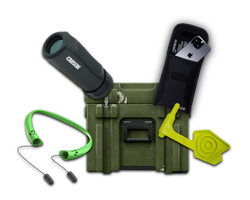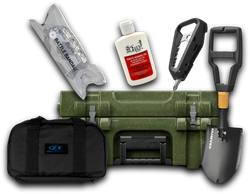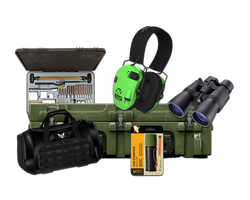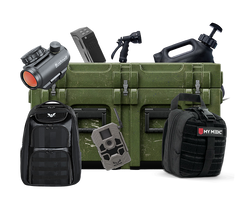How to Dry a Sleeping Bag: Maximizing Lifespan and Performance
Table of Contents
- Introduction
- Understanding the Importance of Proper Drying
- Different Types of Sleeping Bags and Their Materials
- The Art of Drying a Sleeping Bag
- Common Mistakes to Avoid
- The Role of Quality Gear
- Conclusion
- FAQ
Introduction
Imagine you're at the end of an exhilarating camping trip, the stars twinkling above as you unroll your sleeping bag, ready to snuggle in for a night of restorative rest. But what happens when your trusty sleeping bag gets damp from condensation, unexpected rain, or a spilled drink? Knowing how to dry a sleeping bag properly can make the difference between a cozy night under the stars and a soggy, uncomfortable experience.
Proper drying techniques are crucial not just for comfort but also for preserving the longevity and insulation properties of your sleeping bag. Whether you’re a seasoned adventurer or a casual camper, understanding how to maintain your gear is essential for maximizing its lifespan. In this post, we will explore the best practices for drying both down and synthetic sleeping bags, including techniques, tips, and the importance of using high-quality gear, like those offered by Crate Club.
By the end of this article, you will have a comprehensive understanding of how to effectively dry your sleeping bag, ensuring it remains a reliable companion for all your outdoor adventures. We will cover different drying methods, equipment recommendations, and the potential pitfalls to avoid.
So, let’s dive in and explore how to keep your sleeping bag in peak condition!
Understanding the Importance of Proper Drying
When it comes to sleeping bags, moisture is their worst enemy. Whether from sweat, humidity, or external water sources, dampness can lead to a host of problems, including:
- Loss of Insulation: Moisture compromises the loft of the filling material, reducing its ability to trap heat.
- Mold and Mildew: If not dried properly, moisture can lead to mold growth, which poses health risks and can ruin your bag.
- Odor: A damp sleeping bag can develop unpleasant smells that are difficult to eliminate.
- Reduced Lifespan: Continuous exposure to moisture without proper drying can degrade the materials, leading to premature wear and tear.
Understanding these risks underscores the importance of drying your sleeping bag thoroughly and correctly after use.
Different Types of Sleeping Bags and Their Materials
Before we delve into drying techniques, it's important to recognize that not all sleeping bags are created equal. They typically fall into two main categories: down and synthetic. Each material has its own unique properties and drying requirements.
Down Sleeping Bags
Pros:
- Excellent warmth-to-weight ratio.
- Compresses small for easy packing.
- Superior insulation properties.
Cons:
- Vulnerable to moisture; loses insulating effectiveness when wet.
- Takes longer to dry compared to synthetic bags.
Synthetic Sleeping Bags
Pros:
- Retains insulating properties when wet.
- Dries faster than down bags.
- Generally more affordable.
Cons:
- Heavier and bulkier than down.
- Less compressible.
Importance of Choosing the Right Sleeping Bag
Selecting a sleeping bag that suits your needs and understanding its care requirements can greatly enhance your outdoor experience. For example, if you frequently camp in wet conditions, a synthetic bag may be more suited to your needs. Conversely, if you seek lightweight options for backpacking, a down bag is ideal.
Regardless of your choice, knowing how to care for your sleeping bag, especially in terms of drying, will pay dividends in terms of comfort and longevity.
The Art of Drying a Sleeping Bag
Now that we understand the importance of drying our sleeping bags and the materials involved, let’s explore the various methods for drying both down and synthetic sleeping bags.
Drying a Down Sleeping Bag
-
Initial Preparation:
- Check Care Instructions: Always refer to the manufacturer's care label for specific instructions.
- Remove Excess Water: After washing, gently squeeze out excess water without wringing or twisting the fabric, which can damage the down insulation.
-
Drying Methods:
A. Using a Tumble Dryer:
- Set to Low Heat: Use the lowest heat setting on your dryer. High heat can damage the materials.
- Add Tennis Balls: Include a couple of clean tennis balls or dryer balls in the dryer. They help fluff the down and prevent it from clumping together.
- Frequent Checks: Every 30 minutes, remove the sleeping bag to check for dryness and to break up any clumps of down. This process may take several hours.
B. Air Drying:
- Spread Out: Lay the sleeping bag flat on a clean, dry surface or hang it on a clothesline. Ensure there’s good airflow around it.
- Fluff Regularly: Periodically shake and fluff the bag to redistribute the down and promote even drying.
-
Final Touch:
- Once dry, store the sleeping bag uncompressed in a breathable storage sack or loose in a large box to maintain loft.
Drying a Synthetic Sleeping Bag
-
Initial Preparation:
- Similar to down, check the care label and remove excess water by pressing gently.
-
Drying Methods:
A. Using a Tumble Dryer:
- Choose a Medium Heat Setting: Unlike down, synthetic fibers can tolerate slightly higher temperatures.
- Add Dryer Balls: Again, use dryer balls to help fluff the insulation.
- Check Periodically: Remove the bag every 30-45 minutes to check for dryness and fluff.
B. Air Drying:
- Hang or Lay Flat: Synthetic bags can be laid flat or hung to dry, but ensure they are not in direct sunlight to prevent UV damage.
- Fluff Regularly: Shake and fluff the bag periodically.
-
Final Touch:
- Store your synthetic sleeping bag similar to the down bag, ensuring it’s stored uncompressed.
Common Mistakes to Avoid
While drying a sleeping bag may seem straightforward, there are several common pitfalls that can lead to damaging your gear. Here are some key mistakes to avoid:
- Using High Heat: High temperatures can damage both down and synthetic materials. Always opt for low or medium settings.
- Failing to Fluff: Neglecting to break up clumps of insulation can result in uneven loft and compromised performance.
- Not Checking for Complete Dryness: A damp sleeping bag can lead to mold and odor. Always ensure it is completely dry before storing.
- Storing in a Stuff Sack: Once dry, avoid packing your bag into its stuff sack for long periods. Store it loose to maintain loft.
The Role of Quality Gear
Investing in high-quality sleeping bags and maintenance products can significantly enhance your camping experience. Crate Club offers a curated collection of tactical gear, including top-rated sleeping bags that are designed for maximum performance and durability. This gear not only withstands the rigors of the outdoors but is also easier to care for.
For those looking for high-quality sleeping bags and related products, consider subscribing to Crate Club’s offerings. With various subscription tiers, you can receive a selection of premium gear tailored to your needs:
- Lieutenant Tier: For casual users, offering survival tools and everyday carry gear.
- Captain Tier: A mix of survival and tactical gear, perfect for those who want to be prepared for anything.
- Major Tier: Premium gear for seasoned survivalists seeking top-quality equipment.
- General Tier: Real-issue tactical gear used by professionals.
Explore Crate Club’s subscription services here and discover how the right gear can elevate your outdoor experience.
You can also browse the Crate Club Shop for individual gear purchases. Check out the collection here to find the perfect additions to your camping arsenal.
Conclusion
Properly drying your sleeping bag is an essential part of gear maintenance that can significantly enhance its longevity and performance. By understanding the different materials, employing effective drying techniques, and avoiding common mistakes, you can ensure your sleeping bag remains a reliable companion on all your adventures.
Remember, whether you opt for a down or synthetic sleeping bag, the right care can preserve its insulation properties and prevent the growth of mold or odors. As you prepare for your next outdoor expedition, keep in mind the importance of drying your sleeping bag thoroughly, and consider investing in high-quality gear that will serve you well for years to come.
As you venture into the wild, empowered by the right equipment and knowledge, take a moment to reflect on your journey and the stories your gear will help you create. Happy camping!
FAQ
How often should I wash my sleeping bag?
It's recommended to wash your sleeping bag every 3-5 uses or when it shows visible signs of dirt or odor. Over-washing can lead to wear, so be mindful.
Can I dry my sleeping bag in the sun?
While it's okay to air dry your bag outside, avoid prolonged exposure to direct sunlight, as UV rays can degrade the fabric over time.
What if my sleeping bag develops clumps after washing?
If you notice clumps after washing, rewash it, ensuring thorough rinsing. During the drying process, fluff the bag regularly to redistribute the insulation.
How can I store my sleeping bag when not in use?
Always store your sleeping bag uncompressed in a breathable storage bag or loose in a large box, away from direct sunlight and moisture.
Is it worth investing in a high-quality sleeping bag?
Absolutely! High-quality sleeping bags offer better insulation, durability, and ease of care, making them a worthwhile investment for any outdoor enthusiast.
With this comprehensive guide, you now have all the information you need to maintain your sleeping bag effectively. Equip yourself with the right knowledge and gear from Crate Club to make the most of your outdoor adventures.
Share this article



